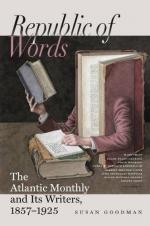The English Royal Sovereign, 3,765 tons and 330 feet length, and the Prince Albert, 2,529 tons and the same length, are razeed wooden vessels. The former carries 5, and the latter 6 of Captain Coles’s turrets with inclined sides, each turret designed for two 110-pounder breech-loading Armstrong guns. The class of iron vessels constructing to carry two of Coles’s turrets are 175 feet long, having 42 feet beam, 24 feet depth, 17 feet draught, and 990 tons displacement. All these English vessels are much higher out of water than Ericsson’s.
Besides these classes, there is the variety of iron-clad vessels called turtles, from their shape,—among them, the Keokuk (Whitney Battery) 159-1/2 feet long, with two stationary 11-inch gun turrets,—and a class of Western river vessels of very light draught and some peculiarities of construction. The latter resemble the Stevens Battery in the shape and position of their armor, but carry their guns within their casemates.
The Stevens Battery, the Onondaga, and the Keokuk have independent screw-propellers, which will enable them to turn on their own centres and to manoeuvre much more rapidly and effectively in action than vessels which, having but one propeller, cannot change their direction without changing their position, and are obliged to make a long circuit to change it at all. This subject is beginning to receive in Europe the attention which it merits.
CONCLUSIONS.
The direction of immediate improvement In ordnance for iron-clad warfare appears to be the abandonment of cast-iron, except as a barrel to be strengthened by steel; binding an inner tube with low-steel hoops having a successively increasing initial tension; and the use of spherical shot at excessive velocities by means of high charges of powder in bores of moderate diameters. The rifling of some guns is important, not so much to secure range or accuracy, as to fire elongated shells through armor.
The direction of improvement in ironclad vessels appears to be the concentration of armor at a few points and the protection of the remainder of the vessel from the entrance of water by a streak of armor at the water-line and numerous bulkheads, etc., in distinction from necessarily thin and inefficient plating over all; high speed without great increase of weight of the driving parts, by means of improved engines and boilers and high pressure; the production of tenacious iron in large, thick, homogeneous masses; and the rapid manoeuvring of heavy ordnance by machinery.
In justice to himself, the writer deems it proper to state, that within the limits of a magazine-article it has been impossible to enter into the details, or even to give an outline, of all the facts which have led him to the foregoing conclusions. In a more extended work about to be published by Van Nostrand, of New York, he has endeavored, by presenting a detailed account of English and American experiments, a description and numerous illustrations, derived mostly from personal observation, of all classes of ordnance and armor and their fabrication, and of iron-clad vessels and their machinery, and a resume of the best professional opinions, to add something at least usefully suggestive to the general knowledge on this subject.




